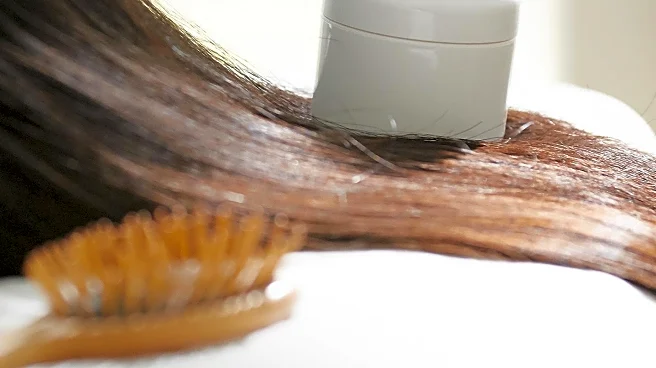What's Happening?
A recent exploration into hair loss treatments has highlighted the use of Platelet-Rich Plasma (PRP) therapy as a promising alternative for hair regrowth. PRP involves using a patient's own processed blood to stimulate hair growth, offering a potentially quicker and longer-lasting effect compared to traditional supplements and medications. The treatment, which costs approximately $850 per session, typically requires a minimum of three sessions to start seeing results. While some dermatologists recommend combining PRP with medications for enhanced outcomes, individuals sensitive to prescriptions may opt for PRP alone. The article also discusses the side effects of common hair loss medications like spironolactone and minoxidil, which can include gastrointestinal upset and hormonal imbalances. Alternatives such as Nutrafol supplements, rosemary oil, and low-level red light therapy are also mentioned as less invasive options.
Why It's Important?
The significance of PRP therapy in the context of hair loss lies in its potential to offer a more effective and less invasive solution for individuals struggling with this condition. Hair loss affects a significant portion of the population, impacting self-esteem and quality of life. Traditional treatments often come with side effects that can deter patients from continuing their use. PRP provides a promising alternative that could appeal to those seeking a more natural approach without the adverse effects associated with medications. This development could influence the hair care industry by shifting consumer preferences towards more innovative and personalized treatment options.
What's Next?
As PRP therapy gains traction, further research and clinical trials could solidify its place as a mainstream treatment for hair loss. Dermatologists and hair care professionals may increasingly recommend PRP as part of a comprehensive treatment plan, potentially in combination with other natural remedies. The market for hair loss treatments could see a shift towards more personalized and less invasive options, prompting companies to invest in developing and marketing PRP and similar therapies. Patients are likely to seek consultations with dermatologists to explore PRP as a viable option, leading to increased demand for specialized clinics offering this service.
Beyond the Headlines
The rise of PRP therapy also raises questions about accessibility and affordability, as the cost per session may be prohibitive for some individuals. Ethical considerations regarding the marketing of such treatments and the need for informed consent are crucial, as patients must be fully aware of the potential outcomes and limitations. Additionally, the trend towards natural and minimally invasive treatments reflects a broader cultural shift towards holistic health and wellness, influencing consumer behavior across various sectors.











